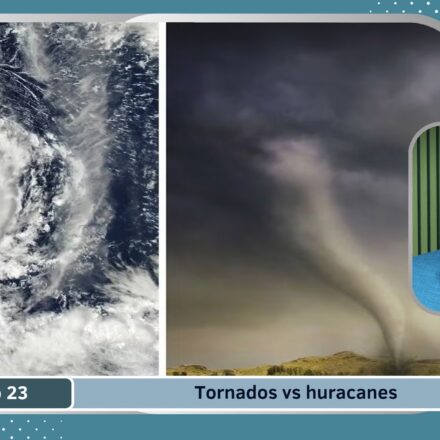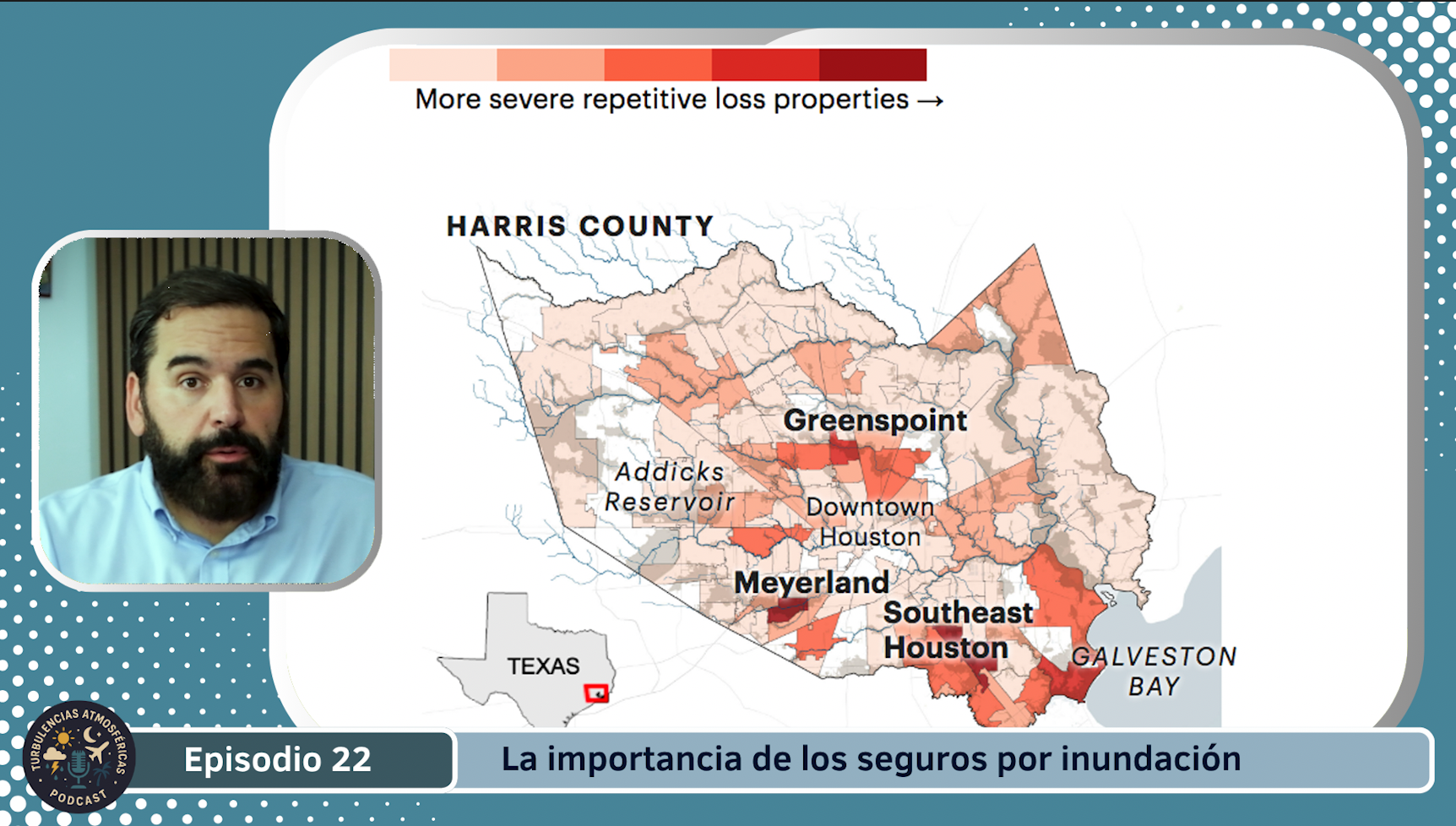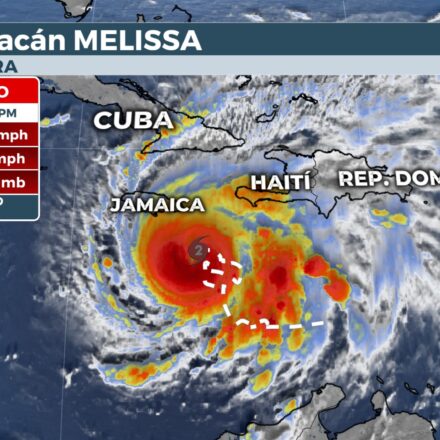
Chapter 23. Hurricanes vs. tornadoes
In this episode of Atmospheric Turbulence we clear up one of the most frequent doubts every season: how are tornadoes and hurricanes really different? Many people confuse them or use them as synonyms, but they are completely different phenomena. To understand it in depth, I am accompanied by my friend and colleague, meteorologist and oceanographer Eduardo Rodriguez, with whom we analyzed how they are born, how they move and why they may seem similar, although their power, duration and impact are totally different.
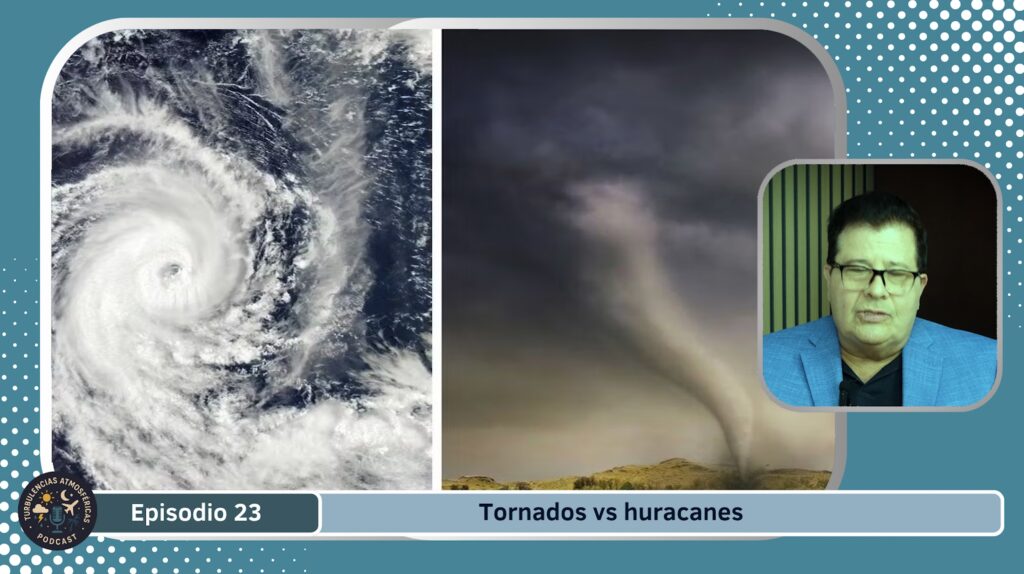
Both share some similarities, as the counterclockwise rotation in the northern hemisphere, but that's where their coincidences end. While a hurricane can last for days and cover thousands of kilometers, a tornado appears, sweeps away and disappears in a matter of minutes. During the talk we also talked about how their intensity is measured: tornadoes are classified with the Fujita scale, and hurricanes with the Saffir-Simpson scale, two different ways of quantifying the strength of the most extreme winds on the planet.

The curious thing is that, although a tornado can reach much more intense winds - up to 500 km/h in an F5-, the hurricanes damage because it lasts longer, generates more damage, generates storm surges, torrential rains e extensive flooding. Eduardo explained it very clearly: tornadoes are born of the clash between cold and dry air north with warm and humid air Gulf of Mexico, especially in the central United States, while hurricanes feed directly into the Gulf of Mexico, especially in the central United States, while hurricanes feed directly into the Gulf of Mexico, especially in the central United States. heat and energy of the tropical oceans.
Later on, he was joined by Kamila Daza, The data and context provided help to dimension the phenomenon. Texas is the state that records the most tornadoes each year - more than 120-, although Oklahoma y Kansas have a higher density per square kilometer. Their participation served to put numbers and territory to what we often see only in images: the real magnitude of tornadoes in the daily lives of millions of people.
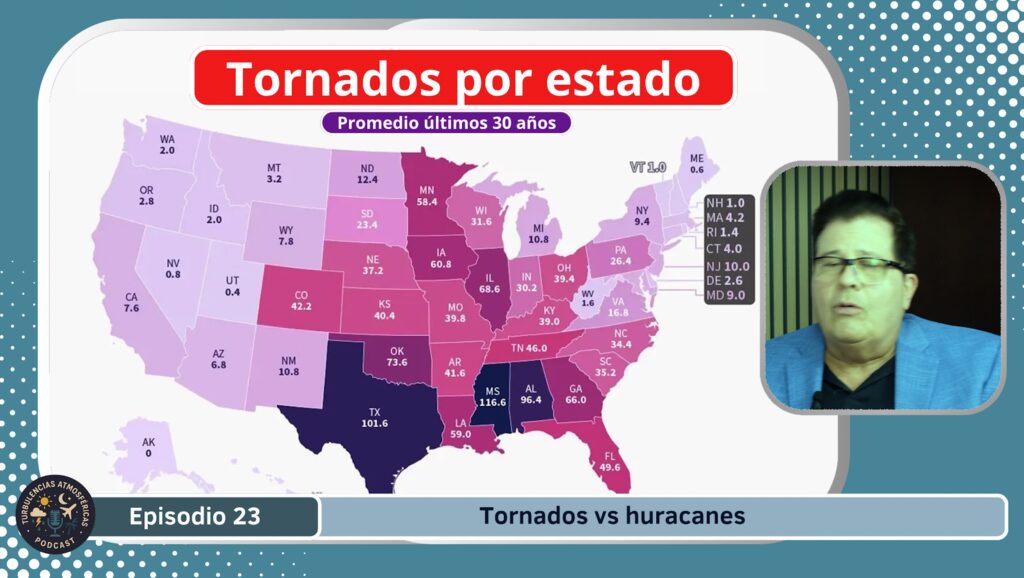
We also reviewed some of the most remembered tornadoes and its imprint on popular culture, from the films Twister y Twisters to the real story of Tim Samaras, the legendary storm chaser, the main character of the book The Man Who Caught the Storm. That universe where science, cinema and risk reflects the extent to which these phenomena awaken, at the same time, fear, respect and fascination.
We close this episode by talking about something fundamental: the preparation. Knowing how to react can make the difference between danger and safety. In a tornado, every second counts: take shelter immediately indoors and away from windows. In a hurricane, on the other hand, the response time is longer, and it is crucial to follow the evacuation routes, The weather is not only a matter of meteorology, but also a matter of weather forecasting. In short, understanding these phenomena is not only a matter of meteorology, but also a matter of prevention and resilience.

In a tornado, reaction time is measured in minutes; in a hurricane, in hours or days. Knowing where to take shelter, knowing evacuation routes and having a familiar plan can make the difference between danger and safety. I always say that understanding time is not just a matter of science, but of survival. And that's why I like to share these spaces: so that each of us is better informed and can face the power of nature with knowledge and respect.
In this chapter
01:30 What is a tornado?
04:20 Saffir-Simpson vs Fujita Scale
06:20 Tornado vs. hurricane warning
08:00 How a tornado is formed
11:00 Hurricane vs tornado season
17:00 The state with the most tornadoes
21:00 Safe place for hurricanes and tornadoes
28:00 The most destructive hurricanes
Remember that you can retrieve our entire series here



